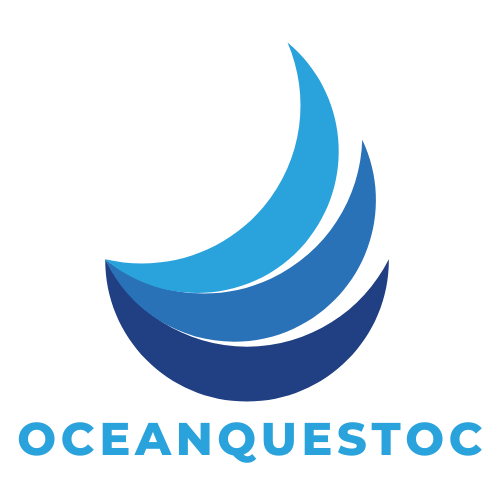In a world where working in pajamas is the new power suit, remote admin tools have become the unsung heroes of productivity. These nifty applications allow tech-savvy individuals to manage systems from the comfort of their couch—or even while sipping coffee at a beachside café. Who wouldn’t want to troubleshoot a server issue while pretending to be on vacation?
Remote admin tools are more than just a fancy way to keep the IT department running smoothly; they’re essential for anyone looking to streamline operations and boost efficiency. With a click of a button, you can access servers, manage networks, and even provide support—all without the hassle of traffic or awkward elevator small talk. So, buckle up and get ready to explore the world of remote admin tools, where convenience meets productivity and maybe even a little bit of fun.
Table of Contents
ToggleOverview of Remote Admin Tools
Remote admin tools play a vital role in modern workplaces, allowing users to access and manage their systems from any location. These applications streamline tasks such as server management and network oversight, providing flexibility and efficiency to professionals worldwide. Many businesses adopt remote admin tools to enhance productivity while reducing the need for physical presence.
Security remains a critical aspect of remote administration. Most tools feature robust encryption, user authentication, and access controls, ensuring safe connections between devices. Administrators can monitor activities in real time, quickly identifying and resolving issues before they escalate.
Integration capabilities enhance the functionality of remote admin tools. These applications often connect seamlessly with existing software, allowing users to maintain productivity across various platforms. Furthermore, support for multiple devices ensures that both desktop and mobile users can benefit from remote access.
Costs associated with remote admin tools may vary significantly. Some solutions offer free versions, while others require subscription fees based on user numbers and features. Evaluating multiple options helps businesses choose tools that align with their budgets and operational needs.
User experience influences the effectiveness of remote admin tools. Intuitive interfaces and straightforward setups reduce the learning curve for new users, allowing teams to focus on their tasks rather than technology. Training resources, such as tutorials and documentation, further support users in leveraging these tools effectively.
Over time, remote admin tools have evolved to meet the changing demands of the workforce. Adopting the right tools can significantly improve collaboration, enhance efficiency, and support the growing trend of remote work.
Key Features to Consider
When selecting remote admin tools, several key features enhance efficiency and effectiveness. Focusing on these aspects can significantly impact user experience and operational success.
Security Measures
Security measures play a crucial role in protecting sensitive data during remote access. Encryption protocols safeguard data transmission, ensuring that information remains confidential. Authentication methods, such as two-factor authentication, verify user identities effectively, reducing unauthorized access risks. Regular security updates from the provider are essential for maintaining protection against new threats. Vendors that offer detailed logs and monitoring options allow for better oversight of system access and activities.
User Interface and Experience
User interface and experience directly influence how effectively teams utilize remote admin tools. Simple navigation and intuitive design can reduce the learning curve for new users. Support resources, including tutorials and documentation, facilitate quicker onboarding processes. Customizable features allow users to tailor the interface according to personal preferences, improving overall satisfaction. Additionally, responsive design ensures accessibility across different devices and screen sizes.
Compatibility and Integration
Compatibility and integration enhance the functionality of remote admin tools within existing ecosystems. Tools that support various operating systems provide flexibility across different environments. Integration capabilities with software, such as Customer Relationship Management systems or file-sharing platforms, streamline workflows and improve collaboration. Choosing solutions that offer Application Programming Interfaces allows for custom integrations to fit specific business needs. Prioritizing tools that easily connect with other applications enhances productivity and ensures a seamless user experience.
Popular Remote Admin Tools
Various remote admin tools enhance management and support capabilities for remote teams. These tools cater to different needs, focusing on security, user experience, and efficiency.
Tool 1: Overview and Features
TeamViewer serves as a versatile solution for remote access and support. Users appreciate its cross-platform compatibility, enabling access on Windows, macOS, and Linux systems. Features include remote desktop sharing, file transfer capabilities, and session recording functions. Security measures, such as end-to-end encryption, protect user data from unauthorized access. Moreover, its intuitive interface simplifies navigation, facilitating a seamless user experience.
Tool 2: Overview and Features
AnyDesk stands out for its low latency and fast performance, making it ideal for users needing reliable connections. It supports multiple platforms, including Android and iOS, ensuring wide accessibility. Key features involve remote desktop control, file management, and session recording. It prioritizes security, employing banking-standard encryption. The customizable interface allows users to tailor their experience according to individual preferences.
Tool 3: Overview and Features
LogMeIn offers robust features designed for IT professionals and remote workers. Users access their systems from anywhere using various devices. Significant features include remote file access, multi-monitor support, and user management functionalities. LogMeIn emphasizes security, featuring two-factor authentication and encrypted connections. User-friendly experience contributes to efficient workflows, ensuring tasks are completed with minimal friction.
Benefits of Using Remote Admin Tools
Remote admin tools significantly enhance productivity by allowing teams to work from any location. These applications streamline operations, enabling quick access to servers and network management without the need for physical presence. Improved flexibility results in efficient task execution, which is crucial for remote work environments.
Enhanced collaboration emerges from real-time support and communication features. Remote admin tools offer instant messaging and screen-sharing capabilities, making troubleshooting simpler. Teams solve issues faster, reducing downtime and maintaining workflow continuity.
A critical advantage lies in robust security measures. Encryption and user authentication safeguard sensitive data during remote access. These features protect businesses from potential security breaches, ensuring compliance with data protection regulations.
Cost-effectiveness appeals to many organizations. Remote admin tools provide various pricing plans tailored to different budgets. This flexibility allows businesses of all sizes to invest in solutions that fit their specific needs.
User experience plays a pivotal role in the effectiveness of these tools. Intuitive interfaces reduce the learning curve, making it easier for team members to adapt quickly. Access to training resources further supports users in maximizing the tools’ potential.
Integration capabilities also enhance functionality. Compatibility with existing systems allows seamless collaboration among various applications. Businesses benefit from optimized workflows as remote admin tools work harmoniously with other software.
Using remote admin tools leads to improved productivity, enhanced security, and better cost efficiency while promoting a positive user experience. These benefits are essential in the evolving landscape of remote work, making these tools indispensable for modern organizations.
Drawbacks and Considerations
Remote admin tools, while beneficial, come with certain drawbacks and considerations. Security vulnerabilities can arise when accessing sensitive data over the internet. The complexity of these tools often leads to a steep learning curve, particularly for less tech-savvy users. Licensing costs, although varied, might not suit every organization’s budget, especially for smaller businesses.
Additional factors to keep in mind include compatibility issues with existing systems and software. Some tools may not function effectively across different platforms, hindering seamless operation. Performance can also be affected by internet connectivity; slow connections lead to frustrating delays in accessing remote systems.
Support challenges may emerge due to dependence on these tools for critical functions. Relying solely on remote admin tools can cause disruptions if technical issues occur. User privacy concerns also arise, as monitoring features may be viewed as intrusive by employees.
Vendor reliability is crucial; not all companies providing remote admin tools offer consistent support. Downtime or service outages can severely impact business operations. Regular updates and patches are necessary to maintain security but may require additional management resources.
Evaluating the trade-offs necessitates careful consideration of specific organizational needs and operational contexts. Organizations must weigh these drawbacks against the benefits to ensure alignment with their goals and workflows.
Remote admin tools are transforming the way organizations operate in a digital landscape. By providing the flexibility to manage systems from any location they empower teams to enhance productivity and collaboration. The integration of robust security measures ensures that sensitive data remains protected while user-friendly interfaces promote quick adoption.
As businesses navigate the complexities of remote work it’s essential to weigh the advantages against potential drawbacks. Selecting the right tools involves considering security features compatibility and overall user experience. Ultimately investing in reliable remote admin tools can lead to streamlined operations and a more efficient workforce.





